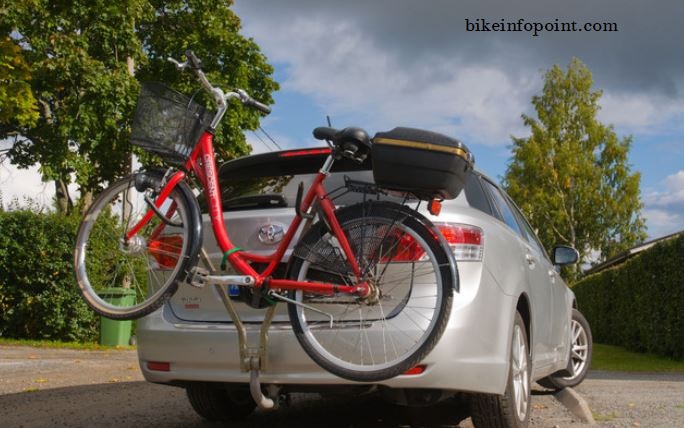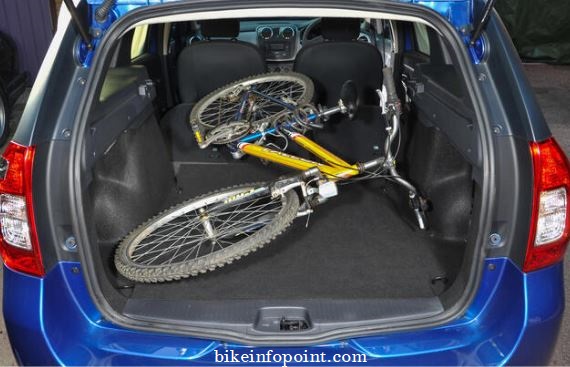
How to Transport a Bike without a Rack
Transporting a bike without a rack can be a challenging task, particularly for those who do not have experience or the necessary tools to carry out the task. This is a problem that many cyclists face, especially if they need to transport their bikes over long distances or if they don’t own a car with a bike rack. While a bike rack is a convenient way to transport a bike, it is not the only option available
The importance of finding a solution to this problem cannot be overstated. Bicycles are a valuable investment, and it is important to protect them from damage during transportation. Additionally, many cyclists rely on their bikes as a primary mode of transportation, making it critical that they can transport them safely and effectively. Transporting a bike without a rack is also a necessary skill for those who want to take part in cycling events or races, particularly if they need to transport their bikes to a different location.
While it may seem daunting at first, there are several options available for transporting a bike without a rack. By understanding the different methods available and taking the necessary precautions, cyclists can safely transport their bikes without having to invest in a bike rack or pay for expensive transportation services. The following sections will outline some of the considerations and methods for transporting a bike without a rack, as well as provide tips for safely transporting a bike.
Table of Contents
ToggleConsiderations before Transporting a Bike

I. Size and weight of the bike:
The size and weight of the bike are important factors to consider before transporting it. Bikes come in different sizes and shapes, and some may be heavier or more cumbersome to transport than others. Larger bikes or those with long wheelbases may not fit inside some vehicles or may be difficult to secure on the roof. Similarly, heavier bikes may be more difficult to lift onto a roof or to secure using bungee cords or rope. Before attempting to transport a bike, it is important to ensure that the size and weight of the bike are compatible with the chosen method of transportation. If the bike is too large or heavy to transport safely, it may be necessary to consider an alternative method of transportation, such as renting a bike rack or using a professional transportation service.
II. Type of vehicle:
The type of vehicle being used for transportation is another important consideration. Different types of vehicles have different capabilities for transporting bikes, and some methods of transportation may be more compatible with certain types of vehicles than others. For example, a smaller car may not be able to accommodate a bike inside or on the roof, while a larger vehicle with a roof rack may be better suited for this purpose. Additionally, some vehicles may be better suited for transporting bikes inside the vehicle, while others may be better suited for using a trunk or hitch-mounted bike carrier. It is important to consider the capabilities of the vehicle and choose a method of transportation that is compatible with it. If the chosen method of transportation is not compatible with the vehicle, it may be necessary to consider alternative options or to rent a different vehicle for transportation.
Methods for transporting a bike without a rack

A. Inside the vehicle:
Transporting a bike inside the vehicle is a common method for those without a bike rack. This method works best for smaller bikes and smaller cars, but can also be used for larger bikes if the car has enough space. To transport a bike inside the car, it is best to remove the front wheel and loosen the handlebars to make it more compact. The bike can then be placed inside the car with the wheels facing down, and secured with bungee cords or rope to prevent movement. One of the advantages of this method is that the bike is protected from the elements during transportation. However, this method may not be suitable for long trips or for transporting multiple bikes.
B. Trunk-mounted bike carrier:
A trunk-mounted bike carrier is a cost-effective and convenient option for those without a bike rack. These carriers attach to the trunk of the car and can hold one or more bikes securely. Trunk-mounted bike carriers come in different sizes and styles and can accommodate different types of bikes. However, it is important to ensure that the carrier is compatible with the vehicle and that the weight of the bikes does not exceed the recommended limit. Additionally, the straps used to secure the carrier to the trunk can cause scratches or damage to the car’s finish.
C. Hitch-mounted bike carrier:
A hitch-mounted bike carrier is a popular option for those with a hitch on their vehicle. This type of carrier attaches to the hitch and can hold one or more bikes securely. Hitch-mounted bike carriers come in different sizes and styles and can accommodate different types of bikes. It is important to ensure that the carrier is compatible with the hitch and that the weight of the bike does not exceed the recommended limit. One advantage of this method is that it frees up space on the trunk of the car, allowing for additional storage space. However, it may be difficult to access the trunk of the car while the bikes are on the carrier.
When considering a method for transporting a bike without a rack, it is important to choose a method that is compatible with the bike and the vehicle being used. It is also important to take necessary precautions to ensure the safety of the bike during transportation. This includes using proper securing methods and checking the bike and carrier regularly during the trip. Additionally, it is important to be aware of the laws and regulations regarding bike transportation in the area where the trip is taking place.
How to Lock a Bike Without a Rack
Tips for Safely Transporting a Bike
Use proper tie-downs and padding:
It is important to properly secure the bike to the carrier or vehicle to prevent it from shifting during transport. Using proper tie-downs and padding can help to protect the bike from damage and ensure that it stays in place. Some carriers may come with their own tie-downs, while others may require separate straps or bungee cords. It is important to follow the instructions provided by the carrier or tie-downs to ensure that the bike is properly secured.
In addition to using proper tie-downs, it is also important to use padding to protect the bike from damage during transport. This can include using foam padding or other protective materials to prevent the bike from rubbing against the carrier or other bikes during transport.
Check the weight limit of the carrier:
It is important to check the weight limit of the carrier or vehicle being used to transport the bike. Overloading the carrier or vehicle can lead to instability and can be dangerous. It is important to ensure that the weight of the bike or bikes being transported does not exceed the recommended limit.
Drive carefully and be aware of the bike during transport:
When transporting a bike, it is important to drive carefully and be aware of the bike during transport. Sudden stops or turns can cause the bike to shift or fall off the carrier, which can be dangerous for both the bike and other drivers on the road. It is important to drive defensively and avoid sudden maneuvers while the bike is on the carrier.
It is also important to periodically check the bike during transport to ensure that it is still properly secured and has not shifted during transit. This can help to prevent damage to the bike and ensure that it arrives at its destination safely.
Consider a protective cover for the bike:
Using a protective cover for the bike can help to prevent damage from dirt, dust, and other debris during transport. This can be especially important for longer trips or trips in adverse weather conditions. Protective covers can be purchased separately or may be included with some carriers.
By following these tips, you can help to ensure that your bike is safely transported to its destination. Properly securing the bike, checking the weight limit of the carrier, driving carefully, and using a protective cover can all help to protect the bike and prevent damage during transport.
In summary, transporting a bike without a rack can be done safely and effectively with the right equipment and planning. By following safety guidelines, researching regulations, considering a bike rack, and experimenting with different methods, you can transport your bike with confidence and ease.


